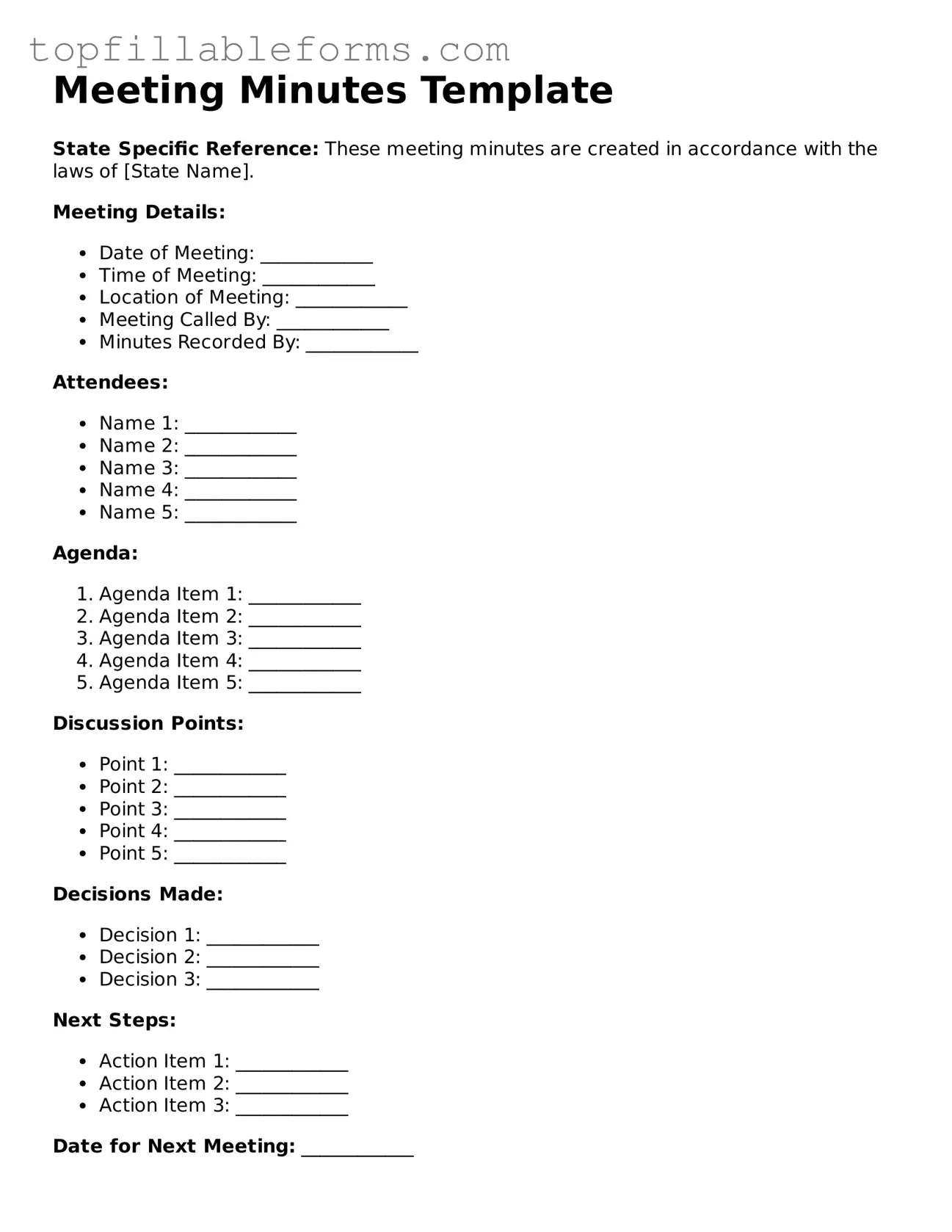Free Meeting Minutes Form
The Meeting Minutes form is a document that captures the essential details of a meeting, including the topics discussed, decisions made, and action items assigned. This form serves as an official record that helps participants remember what was covered and ensures accountability for follow-up tasks. Understanding how to effectively use this form can enhance communication and organization within any group or organization.
Open Meeting Minutes Editor Here
